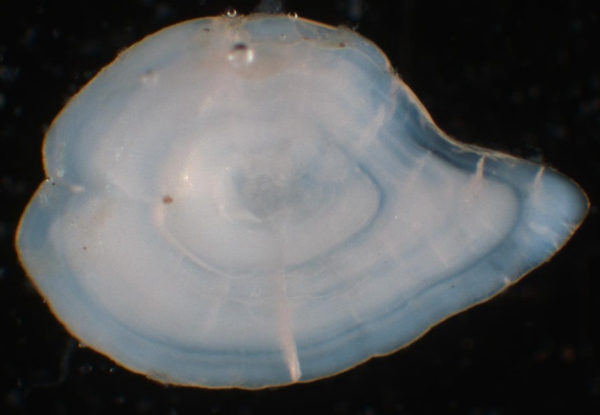 |
Fish scales, fin rays, and other hard structures are useful to biologists in determining a fish’s age and rate of growth over time. Otoliths, also known as ear stones, are calcified structures inside a fish’s head that aid in hearing and balance. They may have the greatest promise in providing biologists with the most reliable age and growth data necessary to manage fisheries.
To that end, recent research at the U.S. Geological Survey—Idaho Fish and Wildlife Cooperative Research Unit at the University of Idaho, in collaboration with the Idaho Department of Fish and Game, has yielded new information on Yellowstone cutthroat trout. The cutthroat is an important sport fish in Idaho, Wyoming, Montana, Utah, and Nevada. The trout is of conservation concern due to declining populations across its range. The research findings were published in the Journal of Fish and Wildlife Management.
Funded by Sport Fish Restoration (Dingell-Johnson) dollars, paid by the manufacturers of fishing rods and tackle, and a tax on motorboat fuel, researchers collected scales and otoliths from 416 Yellowstone cutthroat trout from Henrys Lake in southeast Idaho. The trout ranged from 6 to 24 inches long and were caught by gill nets fished overnight in the lake. The scientists sought to compare and discover the reliability of both methods of ageing the trout. Regarding the otoliths, they also examined the reliability of examining whole, intact otoliths vs. thin cross sections of otoliths.
Taking otoliths has a downside. It requires killing the fish to retrieve the structures, whereas scales do not. Processing the otoliths is also labor intensive. Removing them from a fish’s body comes about quickly, but preparing the sectioned otoliths for viewing takes a bit of time. The researchers sliced the otoliths with a low-speed diamond saw, sanded and polished the cross-sectioned structures, and set them in epoxy to view them under a scope via transmitted light. What is revealed are growth rings much in the manner that tree rings expose growth patterns.
Taking otoliths has an upside—the resulting age and growth data are more robust, more reliable, and may lead to better management of the trophy cutthroat fishery at Henrys Lake. The researchers determined that the sectioned and polished otoliths proved most precise in determining age, followed by whole otoliths, then the scales being the least precise. Their findings may have applicability with other trout species in other fisheries.
“Age and growth work tends to be very labor intensive compared to most aspects of fisheries work,” said lead researcher, Dr. Michael Quist. “However, it’s the price you pay to gain critical information on factors really influencing population dynamics—growth, mortality, recruitment—and making the best management decisions for the future.”
To learn more about Sport Fish Restoration, visit Partner with a Payer.
—Craig Springer, USFWS—Wildlife and Sport Fish Restoration
